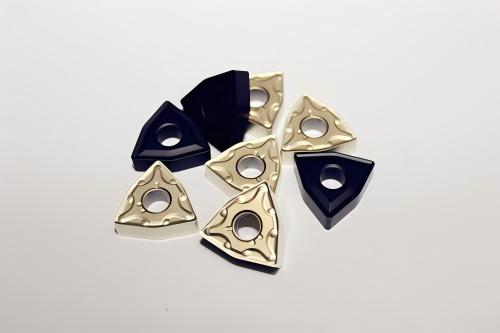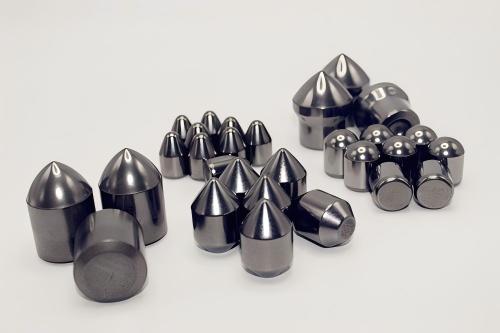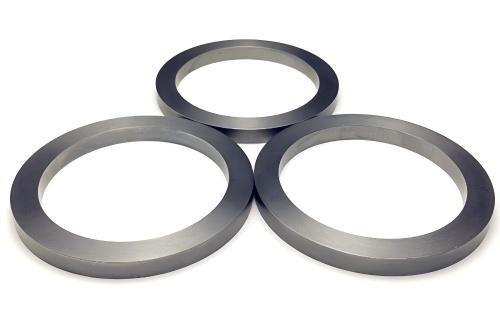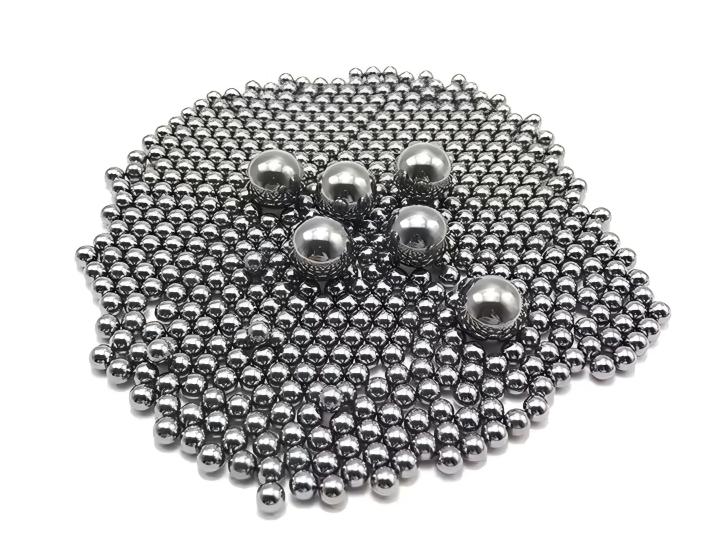Is tungsten carbide an alloy ?
I. Is Tungsten Carbide an Alloy?
Tungsten carbide, with the chemical formula WC, is not an alloy. It is a compound composed of tungsten and carbon. An alloy refers to a metallic substance formed by mixing and melting a metal with one or several other metals or non-metals, followed by cooling and solidification, resulting in a solid product with metallic properties. Tungsten carbide, in contrast, is a hard compound generated through a chemical reaction. It is commonly used as a material for manufacturing cutting tools, abrasives, or wear-resistant components.
II. Hardness Comparison: Pure Tungsten vs. Tungsten Carbide
In terms of hardness, tungsten carbide is significantly harder than pure tungsten. Tungsten carbide is an extremely hard material, with a Mohs hardness rating of 9-9.5 and a Rockwell hardness (HRA scale) reaching 94 HRA, approaching the hardness of diamond. While pure tungsten is also a high-hardness metal, its hardness is far lower than that of tungsten carbide. This exceptional hardness gives tungsten carbide a unique advantage in manufacturing wear-resistant products such as cutting tools and abrasives.
III. Hardness Comparison: Tungsten Carbide vs. Tungsten Alloys
When comparing the hardness of tungsten carbide and tungsten alloys, it’s crucial to note that the hardness of tungsten alloys varies depending on their composition and manufacturing process. However, in general, pure tungsten alloys typically exhibit lower hardness than tungsten carbide. Due to its stable compound structure, tungsten carbide possesses far greater hardness than simple metallic alloys. Therefore, tungsten carbide is usually the superior choice in applications demanding extremely high hardness.
IV. Application Fields of Tungsten Carbide
4.1 Cutting Tools and Machining:
Core Application: This is the largest market for tungsten carbide. Cemented carbide tools (turning tools carbide inserts, milling cutters, tungsten carbide drills, reamers, taps, etc.) are widely used for machining metals, wood, and composites through turning, milling, drilling, tapping, etc.
Advantages: High hardness, excellent wear resistance, superior high-temperature red hardness (retains hardness at elevated temperatures), significantly enhancing machining efficiency, precision, and tool life.

4.2 Mining and Engineering Tools:
Drill Bits and Picks: Used in oil drilling, geological exploration, coal mining, and tunneling. Serves as cutting teeth on drill bits (for roller cone bits, bases for PDC bits) and tips for roadheader picks, enduring immense impact and wear.
Rock Drill Bits: The tip section of percussive rock drill bits.
Construction Machinery Parts: Wear parts like bulldozer and excavator blade tips, plowshares, and slurry pump seal rings.

4.3 Wear-Resistant Parts:
Seals: Mechanical tungsten carbide seal rings, valve seats, and valve cores used in pumps and valves within the chemical, petroleum, and power industries to resist fluid erosion and corrosive wear.
Nozzles: High-pressure nozzles for sandblasting, waterjet cutting, and spray drying equipment, enduring severe wear from high-speed particles or fluids.
Molds and Stamping Tools: Wire drawing dies (for drawing metal into fine wire), cold heading dies, powder metallurgy molds, and stamping dies, utilizing high hardness and wear resistance for metal forming.
Rolls: Guide plates, rolls, etc., for high-speed wire rod mills.

4.4 Wear-Resistant Coatings:
Thermal Spraying: Tungsten carbide coatings are applied via HVOF (High-Velocity Oxy-Fuel), plasma spraying, etc., onto critical components (e.g., turbine blades, valves, shafts, pump bodies) to significantly enhance the substrate’s wear and corrosion resistance.
Hardfacing: Depositing tungsten carbide composite materials onto wear-prone surfaces.
4.5 Wear-Resistant Structural Components:
Bearings and Bushings: Used in special operating conditions involving high temperature, corrosion, or requiring extreme wear resistance.
Gauges and Probes: Wear-resistant contact points or measurement surfaces for precision measuring tools.
Artificial Joints: Tungsten carbide-based composites are used for friction surfaces in some high-performance artificial hip and knee joints.

4.6 Military and Aerospace:
Armor-Piercing Penetrators: Utilized as the core material for kinetic energy armor-piercing projectiles due to its high density and hardness.
High-Temperature Components: Rocket nozzle throat liners, gas turbine blades, and other parts requiring resistance to high-temperature ablation and erosion (often compounded with other ceramics).
Armor: Incorporated as part of composite armor to enhance protective capability.
4.7 Other Applications:
3D Printing: Used as powder material in metal additive manufacturing (SLM – Selective Laser Melting, Binder Jetting) to produce complex-shaped wear-resistant parts.
Jewelry: Used for making men’s wedding bands and fashion jewelry due to its high hardness, scratch resistance, resistance to deformation, unique metallic luster, and grey appearance.
Sports Equipment: Golf club head counterweights (utilizing high density), hiking pole tips, fishing sinkers.
Electronics Industry: Certain high-performance electrical contacts and electrode materials.
Nuclear Industry: Certain components requiring high hardness and radiation resistance.
V. Conclusion
In summary, tungsten carbide is not an alloy but a high-hardness compound. Compared to pure tungsten and tungsten alloys, tungsten carbide possesses a distinct advantage in hardness. This makes tungsten carbide widely applicable across numerous industrial fields. By gaining a deeper understanding of tungsten carbide’s properties and manufacturing processes, we can better utilize this material to facilitate progress and development in related industries.
Our company is among China’s top ten cemented carbide manufacturers. Should you require cemented carbide products, please contact us.
